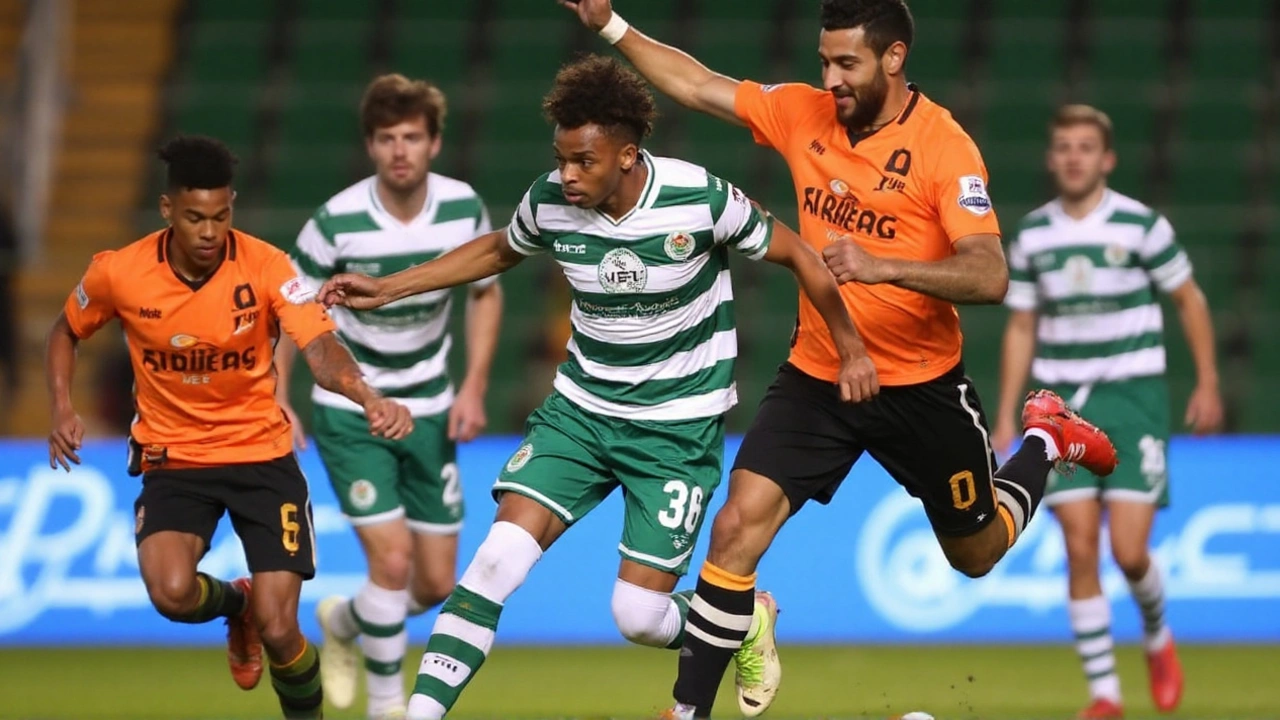A record move in the making
The biggest domestic transfer in League of Ireland history is about to land. Shamrock Rovers manager Stephen Bradley says a deal to send Victor Ozhianvuna to Arsenal is close to the finish line, with the teenager set to move for an initial €2 million. Performance bonuses could take the total beyond €4 million, and Rovers have built in a sell-on clause that could pay off again if the forward rises fast in England.
Bradley didn’t try to hide how big this is for the club or the player. He called the move a natural next step and said the club is proud of a homegrown pathway that can lead from Tallaght to the Premier League. He also stressed that Rovers and Arsenal have agreed a structure that keeps the player’s development front and center.
That structure is unusual but deliberate: Ozhianvuna will sign a four-and-a-half-year contract with Arsenal, yet he’ll remain with Rovers until January 2027. For the next season and a half, he’ll keep starting games in Dublin, logging minutes that matter instead of bouncing between youth sides and benches in England. The approach avoids the red tape that comes with cross-border moves for teenagers and gives the player a clear runway to grow before stepping into one of Europe’s most demanding leagues.
The money matters too. A guaranteed €2 million is a club-changing sum in the League of Ireland, and the potential add-ons—tied to appearances, goals, or milestones—could lift the final fee above anything seen from Ireland’s top flight. It eclipses recent benchmarks, including the reported €1.5 million deal that took Evan Ferguson from Bohemians to Brighton in 2022, and follows the model that saw Shamrock Rovers sell Gavin Bazunu to Manchester City as a teenager, with add-ons rewarding progress after he left.
- Initial fee: around €2 million, with add-ons potentially pushing it beyond €4 million
- Contract: four-and-a-half years at Arsenal
- Loan-style arrangement: stays at Shamrock Rovers until January 2027
- Sell-on clause: future transfer percentage secured for Rovers
- Status: announcement expected within days, subject to medical
Why the structure matters—and what Arsenal see
Clubs in England face strict rules on international moves for under-18s and a points-based system for work eligibility. Even when a deal is allowed, teenagers often get lost in the shuffle. Rovers and Arsenal are trying to sidestep that. Keep the player where he’s thriving, let him stack first-team minutes in a senior league, then move him when he’s stronger, older, and more ready to make the jump.
For Arsenal, this is a bet on upside. The club has leaned into smart youth recruitment in recent seasons, stocking their under-21s and first-team fringes with players who can grow into roles or command strong fees later. The plan for Ozhianvuna looks familiar: keep his development on track now, then integrate him in stages—pre-season looks, domestic cup opportunities, and, if needed, a targeted loan once he’s in London.
So what kind of player are they getting? Ozhianvuna broke into Rovers’ first team at 16 and earned Republic of Ireland under-19 caps soon after. He’s rapid, direct, and happy to carry the ball through traffic. Coaches praise the way he attacks the space behind full-backs and his willingness to press from the front. He’s raw in places—decision-making in the final third, timing on the weak side—but that’s normal for 17. What’s not normal is how comfortable he looks at senior speed.
The League of Ireland has become a sharper proving ground for that kind of talent. Attendance is up, the games are faster, and top clubs are leaning hard into academies. Rovers, in particular, have been building a pipeline through their Roadstone setup, giving teenagers real chances and surrounding them with experienced pros. When a young forward can test himself weekly against senior defenders, you get a cleaner read on what he’ll look like abroad.
The financial ripple for Rovers is obvious. Seven-figure fees don’t just balance budgets; they reshape them. Expect investment in facilities, coaching, and scouting, plus the breathing room to hold firm when the next bid comes in for the next kid. The sell-on clause is the kicker—if Ozhianvuna explodes in England and moves again, Rovers stand to profit twice.
At league level, a record fee carries weight. It tells agents and scouts that Ireland’s top flight can deliver both talent and value. It also gives young players and their families a path that doesn’t require leaving at 15 or 16. Stay, play, develop, and let the right deal come when you’re playing men’s football and learning how to win points on Friday nights.
From Arsenal’s side, the timing aligns with squad needs. Mikel Arteta’s team has quality wide players but must constantly plan for depth, rotation, and the future. Buying potential early and managing development reduces long-term risk and cost. If Ozhianvuna makes the grade, they have an explosive wide forward on a long contract. If he falls short of their level, a player with Irish senior minutes and Premier League pedigree retains strong resale value.
There are still boxes to tick. The medical is pending, and the lawyers will finalize the language around add-ons, sell-on percentages, and the stay-at-Rovers arrangement. But everyone involved is acting like the heavy lifting is done. Bradley’s public comments weren’t coy—they signaled confidence, not caution.
So what happens between now and 2027? For Ozhianvuna, it’s a chance to double down on the basics that got him here—timing runs, decision-making under pressure, end product. For Rovers, it’s about continuing to play him in big games and exposing him to European nights if they can. And for Arsenal, it’s a long look at a player they believe can handle the step. If all goes to plan, the next time he walks into Tallaght in an Arsenal tracksuit, it will be to say goodbye.


